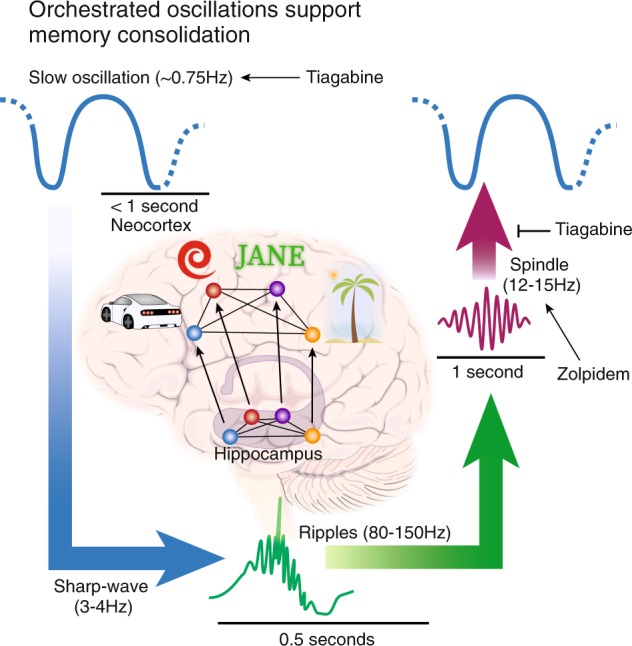Fig. 3.

GABAergic system interactions with sleep oscillations. The tightly linked cardinal oscillations observed during sleep are essential for memory consolidation. The neocortical slow oscillation plays the role of a clock that drives the hippocampal sharp-waves/ripples to occur during sleep spindle troughs. Spindle-ripple events are thus time-locked to occur during the up-state of the slow oscillation, when excitation of the cortex is facilitated. Additionally, reactivation of memories that coincides with ripples can thereby profit from plasticity promoting properties of spindles, such as increases in intracellular calcium activity, to strengthen cortical memory traces. GABAergic drugs influence the generation and the interplay of these oscillations. The GABA reuptake inhibitor tiagabine enhances activity of the system tonically and thereby strongly enhances the amount of slow wave activity, including slow oscillations observed during NonREM sleep. However, it also leads to a reduced spindle to slow oscillation coupling, which explains that this boost does not improve memory consolidation. Zolpidem, a GABA A-positive modulator, on the other hand acts in a phasic manner, since enhanced receptor action must first be activated by GABA excretion. It strongly enhances the amount of sleep spindles and, concomitantly, enhances declarative memory consolidation
